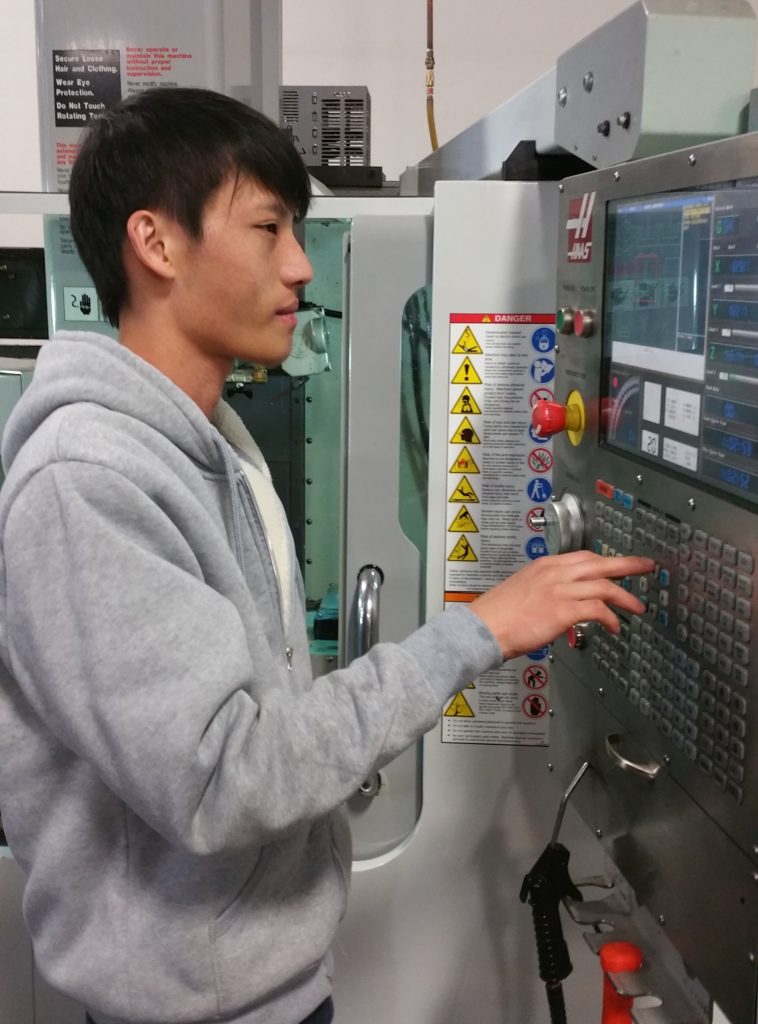Edman: 3D Printing Becoming ‘Handful of Dollars, Overnight and In-House’
 When a manufacturer needed a guide for a nail gun it used to mean outsourcing to a specialized shop. “That is expensive,” 3D engineer Andrew Edman told a 2019 International Fastener Expo conference. But with 3D printing it can be “a handful of dollars, overnight and in-house.”
When a manufacturer needed a guide for a nail gun it used to mean outsourcing to a specialized shop. “That is expensive,” 3D engineer Andrew Edman told a 2019 International Fastener Expo conference. But with 3D printing it can be “a handful of dollars, overnight and in-house.”
Fastener prototypes, testing, shape and tightening tolerances are among current uses, Edman told IFE. 3D printing can be used for custom riveting, inspection and a system for feeding in parts alignment.
Edman, industry manager for product design, engineering and manufacturing at 3D printer company Formlabs, recalled using a 3D printed fixture at Ashley Home Furniture that weighs much less and is faster to change over compared to their traditional machined fixture.
He also cited use of a 3D printer for a mold to form a silicone part at Reynolds Advanced Materials.
In the 1980s, 3D printers “weren’t robust enough,” Edman acknowledged. As they grew they became “big $100,000 machines.”
Today 3D has become “low risk,” making entrepreneurs “free to experiment.”
For example, New Balance shoes uses 3D printers for a section of the midsole. But that is just a beginning, Edman predicted. In the shoe industry, Edman said 3D printing “will go further and make customized shoes. You will stand on a scale, which will generate a shoe built for you.”
Today 3D printing at the end of a product allows customizing without tooling costs – such as Gillette putting individual names on razors.
But the customization is more than cosmetic – such as at dental labs or in hospitals, Edman said.
With 3D customizations, “you don’t have to live with ‘good enough’,” he added.
Manufacturers can reduce costly slowdowns and control the supply chain with 3D printing.
Metal printers thus far are more expensive, “but will become more available,” Edman predicted. 3D is growing “parallel to robotics.” Web: Formlabs.com
Rosenberg Offers Source For Fastener Machine Operators
There is a set of potentially skilled workers as fastener machine operators, Ivan Rosenberg told a 2019 International Fastener Expo conference.
 Citing the “high unfilled demand for skilled workers,” the founder and president of the Uniquely Abled Project has worked with the Industrial Fasteners Institute to develop a program for fastener manufacturers in accessing and hiring individuals “who often are ideal matches for the jobs in fastener manufacturing.”
Citing the “high unfilled demand for skilled workers,” the founder and president of the Uniquely Abled Project has worked with the Industrial Fasteners Institute to develop a program for fastener manufacturers in accessing and hiring individuals “who often are ideal matches for the jobs in fastener manufacturing.”
Rosenberg cited the example of restricted and repetitive behaviors, which are among main abilities of autism. And there are 1.5 million people diagnosed with autism in the U.S.
Abilities for fastener manufacturers include sorting; counting, reading instructions and safety requirements; ability to apply common sense understanding for simple one-or two-step instructions; ability to deal with standardized situations with only occasional or no variables; housekeeping; cleaning/organizing; perform repetitive tasks consistently accurately; maintaining detail focus; perform visual inspection; and high sense of right/wrong in operation and in correctness of parts.
There aren’t a lot of people drawn to operating a CNC machine, Rosenberg noted. The Uniquely Abled Academy has trained 70 CNC operators in a 16-week program.
They are an “employable population and good at repetitious jobs. They are repetition-tolerant and detailed focused.”
Among the employers Rosenberg has supplied people for jobs is with Hawker Pacific Aerospace, which supplies landing gear and hydraulic MRO services for aircraft, including Airbus, Boeing, Bombardier and Embraer.
Rosenberg noted 17% of the U.S. population is classified as disabled. That percentage equals 40 million people, he pointed out.
If those people can’t get or hold jobs, “guess who is paying taxes to support them?” Rosenberg asked.
The Academy training costs $3,000 to $5,000 and “zero to the employer,” Rosenberg said. “That is a drop in the bucket with 100% chance of employment.”
The Academy also coaches potential employers on how to select and work with uniquely-abled employees.
It is estimated that unemployment among autism people is 60% and the unemployment problem is “not going to get solved by charity. We need a business solution.”
Rosenberg explained that frequently the body makes up for some human limitation, such as “the blind can be compensated with better hearing and touch,” he noted.
The question becomes, “What job could use these unique abilities?” A person is “not disabled,” but “best at something,” Rosenberg said.
Employers should include unique abilities in selection.
So the Uniquely Abled Academy seeks to provide “job readiness training” and tells employers, “I’ve got somebody who is perfect for the job.”
Rosenberg said one employer found company morale was up and productivity increased too after hiring three uniquely abled people.
Founded in 2013, UAP is a collaboration with the business community to match those with unique abilities to jobs in demand. UAP is not asking to “help the handicapped.” Tel: 818 505-9915 Email: info@UniquelyAbledProject.org Web: UniquelyAbledProject.org/Program-for-Fastener-Manufacturers

Share: